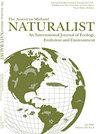入侵鲢鱼后肠浮游植物的存活
IF 0.6
4区 环境科学与生态学
Q4 Agricultural and Biological Sciences
引用次数: 1
摘要
摘要生物体在捕食者的吞噬和消化下生存的能力,或动物内共生,是一种迷人的生态现象,可以促进捕食者介导的猎物扩散,并改变生态网络内的相互作用强度。然而,在入侵物种的背景下,动物内部群落的作用被认为是不常见的。在整个美国,鲢鱼是多产的入侵者,经常通过消耗基础资源来改变受体生态系统的食物网结构。尽管鲢鱼具有生物地球化学和食物网效应,但人们对鲢鱼消费和消化后浮游生物猎物的生存了解有限,对选择性饮食和潜在生存的生态影响更是知之甚少。在本研究中,我们量化了从美国肯塔基州肯塔基湖和田纳西河谷采集的鲢鱼的后肠含量。我们发现大多数(83%)鲢鱼后肠内的浮游植物在繁殖前几乎没有消化。我们的研究表明,鲢鱼的消化限制可能对入侵环境具有重要的生态意义。这些结果可能适用于了解这种快速传播的入侵鱼类如何影响与最近入侵的生态系统中有毒藻类水华相关的食物网动态和生物地球化学循环,以及预测不久的将来的入侵。本文章由计算机程序翻译,如有差异,请以英文原文为准。
Phytoplankton Survival in Hindgut of Invasive Silver Carp (Hypophthalmichthys molitrix)
Abstract. The ability of organisms to survive ingestion and digestion by their predators, or endozoochory, is a fascinating ecological phenomenon that can facilitate predator-mediated dispersal of prey and alter interaction strengths within ecological networks. However, the role of endozoochory in the context of invasive species is considered less often. Throughout the United States, Silver Carp (Hypophthalmichthys molitrix) are prolific invaders that often alter food web structure of recipient ecosystems through the consumption of basal resources. Despite the biogeochemical and food web effects of Silver Carp, there is limited understanding of plankton prey survival after Silver Carp consumption and digestion, and even less known about the ecological effects of selective diets and potential survival. In this study, we quantify hindgut contents of Silver Carp collected from Kentucky Lake, Kentucky, Tennessee River Valley, United States. We found the majority (83%) of phytoplankters within hindguts of Silver Carp showed little digestion prior to egestion. Our study suggests digestion limitations of Silver Carp may have important ecological implications for invaded environments. These results may be applicable in understanding how this rapidly spreading invasive fish can influence food web dynamics and biogeochemical cycles pertinent to toxic algal blooms within recently invaded ecosystems, and forecasting invasion in the near future.
求助全文
通过发布文献求助,成功后即可免费获取论文全文。
去求助
来源期刊

American Midland Naturalist
环境科学-生态学
CiteScore
1.20
自引率
0.00%
发文量
38
审稿时长
18-36 weeks
期刊介绍:
The American Midland Naturalist has been published for 90 years by the University of Notre Dame. The connotations of Midland and Naturalist have broadened and its geographic coverage now includes North America with occasional articles from other continents. The old image of naturalist has changed and the journal publishes what Charles Elton aptly termed "scientific natural history" including field and experimental biology. Its significance and breadth of coverage are evident in that the American Midland Naturalist is among the most frequently cited journals in publications on ecology, mammalogy, herpetology, ornithology, ichthyology, parasitology, aquatic and invertebrate biology and other biological disciplines.
 求助内容:
求助内容: 应助结果提醒方式:
应助结果提醒方式:


